Click on images to enlarge
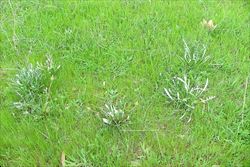
infestation in grassland (Photo: Sheldon Navie)
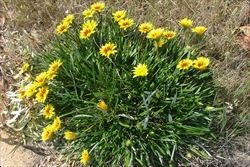
habit (Photo: Sheldon Navie)
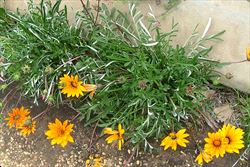
habit (Photo: Sheldon Navie)
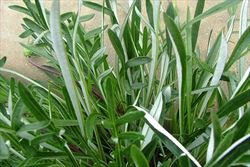
entire and lobed leaves with whitish undersides (Photo: Sheldon Navie)
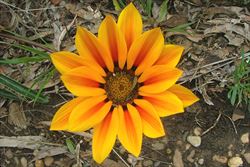
flower-head (Photo: Sheldon Navie)
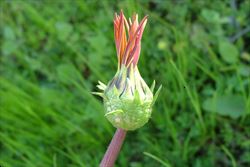
old flower-head showing floral bracts (Photo: Sheldon Navie)
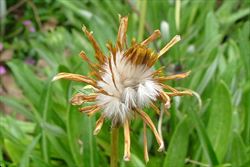
hairy seeds (Photo: Sheldon Navie)
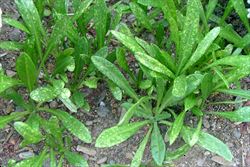
seedlings (Photo: Sheldon Navie)
Scientific Name
Gazania linearis (Thunb.) Druce
Synonyms
Gorteria linearis Thunb.Gazania longiscapa DC.
Family
Asteraceae (Queensland, New South Wales, the ACT, Victoria, Tasmania, Western Australia and the Northern Territory)Compositae (South Australia)
Common Names
gazania, treasure flower, treasure-flower, treasureflower, tufted gazania
Origin
Native to southern Africa (i.e. South Africa).
Naturalised Distribution
This species is widely naturalised in southern and eastern Australia. It is common in Victoria, the ACT, Tasmania, the southern and eastern parts of South Australia, and the south-western and southern parts of Western Australia. Also naturalised in south-eastern Queensland and possibly widely naturalised in New South Wales.
Notes
Gazania (Gazania linearis) is regarded as an environmental weed in Victoria, Tasmania and South Australia and as an emerging or potential environmental weed in parts of Western Australia and New South Wales. This species invades coastal habitats, as well as grasslands and open woodlands in inland areas. It can severely alter the vegetation structure in plant communities by replacing and suppressing native plants.
In Victoria, gazania (Gazania linearis) was first recorded as naturalised in 1979 and was considered to be widespread and common by 1995. It is now very common in the Melbourne area and on the Mornington Peninsula and is also becoming very widespread and common in north-western and north-central Victoria. It prefers coastal sites and inland areas with sandy soils, but is also common along roadsides and in pastures. An ecologically significant area of native grassland at Lockington station, south-west of Echuca, that was in good condition in 1994 has subsequently become choked with gazania (Gazania linearis) and is now no longer significant. This species has also invaded one of Victoria's best grassland reserves, Terrick Terrick National Park, where it is considered to be a significant threat. Woodland areas are not immune from invasion, and gazania (Gazania linearis) is also listed as a high threat weed species in riverine chenopod woodlands and shrubby riverine woodlands in Victoria.
In South Australia, gazania (Gazania linearis) presently covers a significant proportion of degraded areas and coastal dunes on the Southern Fleurieu Peninsula, parts of the Yorke Peninsula and the Murray flats. It is listed as an invasive plant in the Adelaide Hills Council district and as a common invasive garden plant in the Greater Adelaide region. It is also an occasional garden escape on roadsides, beach dunes and around towns in other parts of South Australia and has become naturalised in conservation areas in this state (e.g. Moana Sands Conservation Park and Hallett Cove Conservation Park).
Gazania (Gazania linearis) is also a common coastal weed in the south-east region of Tasmania and a weed of concern in the City of Devonport in northern Tasmania. It is currently considered to be a low priority species in Western Australia, where it is mainly found on roadsides and wasteland areas around settlements, especially in coastal areas and in the southern wheatbelt region. However, it has been recorded spreading into nature reserves in the Shire of Quairading in the wheatbelt. Both gazania species (i.e. Gazania rigens and Gazania linearis) are also listed as environmental weeds in the Central Sydney region and in Pittwater council, in northern Sydney, in New South Wales.
Note: Gazania (Gazania linearis) is very similar to coastal gazania (Gazania rigens) and hybrids between the two species are also thought to be present in naturalised populations. Gazania (Gazania linearis) is much more widespread and common in inland regions, while coastal gazania (Gazania rigens) is mainly restricted to coastal districts.

